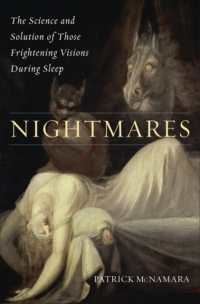Full Description
Understanding Post-Tonal Music explores the compositional and musical processes of twentieth-century post-tonal music. The book is intended for undergraduate or general graduate courses on the theory and analysis of twentieth-century music. The aim of the book is to increase the accessibility of post-tonal music by providing students with tools for understanding issues like pitch organization, rhythm and meter, form, texture, and aesthetics. By presenting the music first and then deriving the theory, Understanding Post-Tonal Music leads students to greater understanding and appreciation of this challenging and important repertoire.
Contents
About the AuthorPrefaceAcknowledgmentsIntroduction: An Overview of Twentieth-Century Compositional Styles1. Pitch Centricity and Composition with Motivic Cells2. Pitch Centricity and Symmetry3. Introduction to Pitch-Class Set Theory4. Analyzing Atonal Music5. Drawing on (and Reinterpreting) the Past ...6. ... And Inventing the Future7. Twelve-Tone Music I: An Introduction8. Twelve-Tone Music II: Invariance, Symmetry, and Combinatoriality9. Serialism: Developments after 194510. Expanding the Limits of Musical Temporality11. Aleatory Music, Sound Mass, and Beyond12. Where Past and Future Meet ... 13. Simplifying Means14. Into the Twenty-First CenturyEpilogueAppendix: The List of Set ClassesBibliographyAcknowledgment of SourcesMusical Example IndexSubject index







